Klinefelter syndrome and its association with male infertility
V Ramakrishnan, S Gowtham Kumar, Radha Pandiyan
1Department of Genetics, Faculty of Allied Health Sciences, Chettinad Academy of Research and Education, Kelambakkam, Chennai 603103 India
2Department of Andrology & Reproductive Medicine, Chettinad Super Speciality Hospital, Kelambakkam, Chennai 603103 India
Klinefelter syndrome and its association with male infertility
V Ramakrishnan1*, S Gowtham Kumar1, Radha Pandiyan2
1Department of Genetics, Faculty of Allied Health Sciences, Chettinad Academy of Research and Education, Kelambakkam, Chennai 603103 India
2Department of Andrology & Reproductive Medicine, Chettinad Super Speciality Hospital, Kelambakkam, Chennai 603103 India
ARTICLE INFO
Article history:
Received 7 August 2013
Received in revised form 10 September 2013
Accepted 12 September 2013
Available online 20 January 2014
Infertility
Klinefelter's syndrome is the most common genetic disorder in which there is at least one extra X chromosome. Males normally have an X chromosome and a Y chromosome (XY). But males who have Klinefelter syndrome have an extra X chromosome (XXY), giving them a total of 47 instead of the normal 46 chromosomes. Sex chromosome abnormalities are more frequently associated with male infertility. The prevalence of XXYs has risen from 1.09 to 1.72 per 1 000 male births. A patient attended to fertility and genetic clinic, during the clinical diagnosis we found the following complaints of loss of secondary sexual characteristics and infertility. Physical examination revealed breast development, thin built, small size testes, and absence of beard and pubic hairs. Karyotype and biochemical analysis were performed to detect chromosomal abnormality as well as hormonal level to confirm the diagnosis of Klinefelter's syndrome. Chromosomal analysis of the peripheral blood lymphocytes demonstrated the constitutional karyotype of 47, XXY. Using karyotype the presence of extra X chromosome was confirmed, supporting the cytogenetic finding. The 47, XXY syndrome is relatively uncommon and can be missed clinically because of its variable clinical presentations. Accurate diagnosis of this constitutional karyotype provides a valuable aid in the counselling and early management of the patients who undertake fertility evaluation.
1. Introduction
Klinefelter’s syndrome (KS) is the most common genetic cause of hypogonadism and male infertility with an incidence of 1 in 500 males. This case has one or more extra X chromosomes. The most common form of Klinefelter syndrome is due to a 47, XXY karyotype and is found in about 80% of cases, but can also be due to variant karyotypes, such as 48, XXXY, 48, XXYY, 49, XXXXY, and 47, XXY/46, XY mosaicism[1]. The syndrome is usually detected during the development of secondary sexual characteristics. In adulthood, small soft testes and symptoms of androgen deficiency associated with azoospermia, tall stature, and bilateral Gynaecomastia characterize it[2]. Nowadays Karyotype is the definite test for the syndrome to identify various types of chromosomal abnormalities in both germline and cancer cells. This case of Klinefelter syndrome is being reported considering its importance in the diagnosis and management of male infertility.
2. Case report
A 33-year-old married male visited our outpatient clinic with complaint of loss of infertility. Physical examination revealed a normal male with a height of 159 cm and a weight of 60 kg and general body texture. Both testes were small and secondary sexual hairs were absent (Figure 1-3). These findings were suggestive of androgen deficiency syndrome complaining of infertility. There was no family history of similarly affected members and the patient wasreferred for karyotype and biochemical tests to confirm the diagnosis. Follicular stimulating (FSH) and luteinizing (LH) hormones level were increased. [FSH: 46.81 mIU/mL (Reference range: 1.0-15.0 mIU/mL), LH 12.31 mIU/ mL (Reference range: 0.7-7.4 mIU/mL), PRL10.91ng/ mL (Reference range: 1.8-17 ng/mL) respectively] and a very low level of testosterone (0.75 ng/ mL). (Reference range: 3.84-34.17 pg/mL). Seminal analyses revealed severe in azoospermia (no motile and immotile sperm). Karyotype result showed 47, XXY chromosome complement (Figure 4) in all screened metaphase spreads.
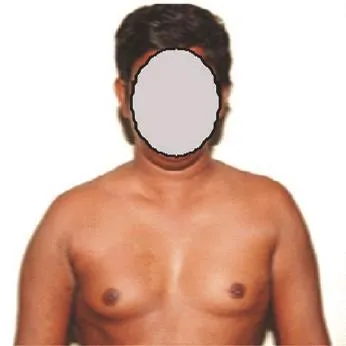
Figure 1. A patient whth Klinefelter syndrome showing breast development.
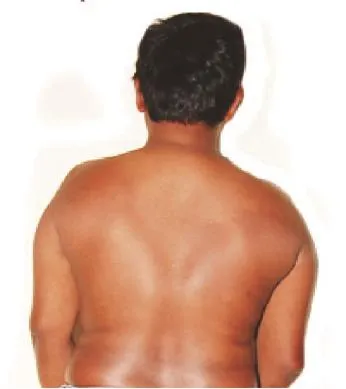
Figure 2. A patient with Klinefelter syndrome showing narrower shoulders.
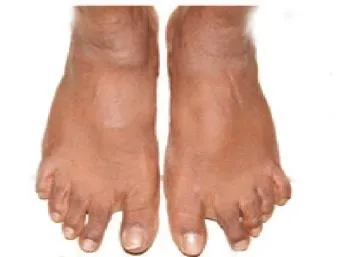
Figure 3. A patient with Kilnefelter syndromes showing wide gap in the toes.
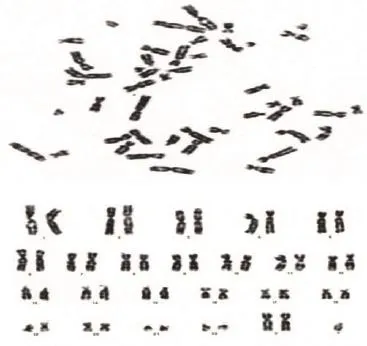
Figure 4. Metaphase spread and karyotype showing 47, XXY chromosome.
3. Discussion
Klinefelter syndrome (47, XXY) has greatly impaired spermatogenesis, with severe oligozoospermia or azoospermia. Sex chromosome abnormalities are the most frequent chromosome related cause of infertility. Studies on sperm chromosomes from men with Klinefelter syndrome have also demonstrated that the extra sex chromosome appears to be eliminated during spermatogenesis.
Chromosomal abnormalities are one of the possible causes of male infertility. The frequency of abnormal karyotypes in various studies showed a wide range from 2.2% to 15.7% (from 1995 to 2009) in infertile men[5-7]. Azoospermia is a common feature of Klinefelter’s syndrome, although severeoligozoospermia and fertility have been reported [8]. Some authors who had investigated chromosomal anomalies, specifically among patients with severe oligospermia and azoospermia, have shown higher figures such as 20.86% [9] and 21.1%[10]. In this study, we found that the person having 47, XXY karyotype has a relatively frequent cause of male infertility and there is a no mosaicism in the case, so that the person cannot produce children and confirmed with the chromosome count. This abnormality is associated with severe spermatogenic failure causing a marked reduction in testicular size and azoospermia resulting in infertility[11].
As we know in general, male with Klinefelter syndrome have infertility. In a very small number of cases, males with Klinefelter syndrome have been able to produce children through assisted reproductive techniques because the person having cells with the XXY chromosome, these males may also have cells with the normal XY chromosome count. Individuals with 47, XXY have variable fertility, depending on the karyotype present and if the individual displays mosaicism[12-13].
Cytogenetic analysis using GTG-banding technique revealed the karyotype 47, XXY. Karyotyping is a gold standard in Klinefelter syndrome diagnosis; however, the test is expensive, labor intensive. The information obtained by such techniques provides a basis for deciding the necessary clinical management and genetic counseling of patients.
Conflict of interest statement
We declare that we have no conflict of interest.
[1] Lanfranco F, Kamischke A, Zitzmann M, Nieschlag E. Klinefelter’s syndrome. Lancet 2004; 364: 273-283.
[2] Kamischke A, Baumgardt A, Horst J, Nieschlag E. Clinical and diagnostic features of Patients with suspected Klinefelter syndrome. J Androl 2003; 24: 41-47.
[3] Fenech M, Morley AA. Measurement of micronuclei in lymphocytes. Mutat Res 1985; 147: 29-36.
[4] ISCN. An international system for human cytogenetic nomenclature. F Mitelman (ed.). Basel: Karger; 1985.
[5] Yoshida A, Tamayama T, Nagao K. A cytogenetic survey of 1007 infertile males. Contracept Fertil Sex 1995; 23: 103.
[6] Nakamura Y, Kitamura M, Nishimura K. Chromosomal variants among 1790 infertile men. Int J Urol 2001;8: 49-52.
[7] Akgul M, Ozkinay F, Ercal D. Cytogenetic abnormalities in 179 cases with male infertility in Western Region of Turkey: Report and review. J Assist Reprod Genet 2009; 26: 119-122.
[8] Tournaye H, Camus M, Liebaers I. Testicular sperm recovery in nine 47, XXY Klinefelter patients. Hum Reprod 1996; 11: 1644-1649.
[9] Zhou H, Zhu JW, Li HG, Tang YP. Genetic defect in Chinese azoospermic patients and their relationship with reproductive hormones. Zhonghua Yi Xue Yi Chuan Xue Za Zhi 2009; 26: 427-430.
[10] Ng PP, Tang MH, Lau ET, Ng LK, Ng EH. Chromosomal anomalies and Y-microdeletions among Chinese subfertile men in Hong Kong. Hong Kong Med J 2009; 15: 31-38.
[11] Pandiyan N, Jequier AM. Mitotic chromosomal anomalies among 1210 infertile men. Hum Reprod 1996; 11: 2604-2608.
[12] Denschlag D, Tempfer C, Kunze M, Wolff G, Keck C. Assisted reproductive techniques in patients with Klinefelter syndrome: a critical review. Fertil & Steril 2004; 82: 775-779.
[13] Linden MG, Bender BG, Robinson A. Intrauterine diagnosis of sex chromosome aneuploidy. Obstet Gynecol 1996; 87: 468-475.
ment heading
10.1016/S2305-0500(14)60006-3
*Corresponding author: V. Ramakrishnan, Department of Genetics, Faculty of Allied Health Sciences, Chettinad Academy of Research and Education, Kelambakkam, Chennai 603103 India.
E-mail: rkgenes@gmail.com
Chromosome abnormality
Klinefelter syndrome.
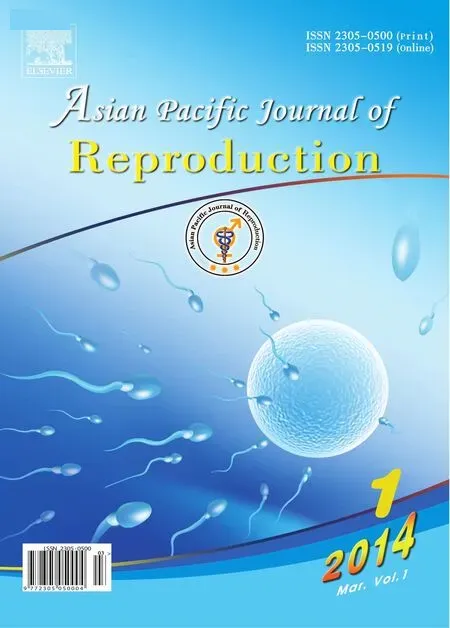 Asian Pacific Journal of Reproduction2014年1期
Asian Pacific Journal of Reproduction2014年1期
- Asian Pacific Journal of Reproduction的其它文章
- Tuberculous orchitis mimicking a testicular tumor: A diagnostic dilemma
- Current insights into gonadotropic pituitary function in the polycystic ovary syndrome
- Investigation on leukocyte profile of periparturient cows with or without postpartum reproductive disease
- Tranexamic acid reduces blood loss during and after cesarean section: A double blinded, randomized, controlled trial
- Maternal outcome in multiple versus singleton pregnancies in Northern Tanzania: A registry-based case control study
- Soluble fms-like tyrosine kinase-1 and vascular endothelial growth factor: Novel markers for unexplained early recurrent pregnancy loss
